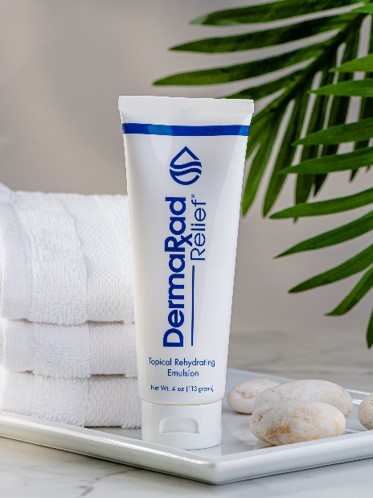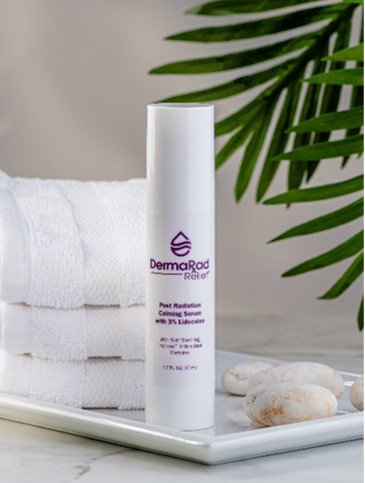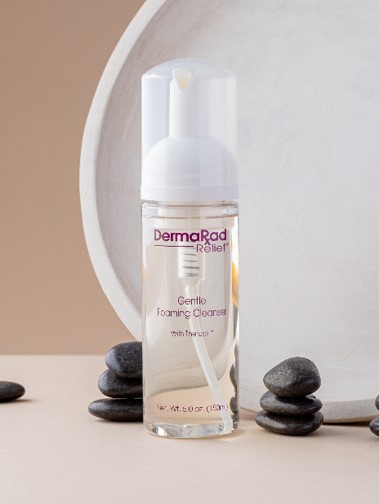
Purchase Now

An intensely moisturizing product specifically designed to address the unique skin care needs of patients undergoing radiation treatments as well as other medical procedures that can damage the skin. Now with 4% Lidocaine and 1% Allantoin to reduce pain and itching and to protect skin from radiation burns!






All of these events can damage the skin and leave it red, irritated, and tender. The DermaRad Relief® line of products has been engineered to provide the best possible relief for damaged and very sensitive skin.






The use of radiation to treat cancer dates all the way back to 1896 and, now, 125 years later, more than 50% of all cancer patients receive radiation as part of their treatment. Radiation therapy is highly effective in killing cancer cells and preventing the recurrence of cancer somewhere else in the body. Radiation treatments may be external or internal. The most common form of external radiation used today is from X-rays (“photons”). Another type of external radiation uses protons instead of X-rays to provide the energy to kill cancer cells. Regardless of which form of radiation is used, the treatment is effective because the radiation damages the DNA of rapidly growing cancer cells, thus preventing them from growing and dividing. Since cancer cells have defective repair mechanisms, they can’t repair the damage to their DNA and they die. Although radiation is effective at killing rapidly dividing cells, slowly growing normal cells ( for example, skin cells ) are still susceptible to radiation damage, and as a result radiation treatments may cause some damage to your skin.
Radiation therapy typically involves once a day treatments, five days a week. The total course of treatment will vary depending on the cancer, but may span a period of 5-9 weeks. Radiation is given in a series of treatments rather than all at once for several reasons; 1) the total dose needed to kill the cancer cells is too great to be given in one or two treatments, 2) cancer cells take time to die and repeated doses maximize the effectiveness in destroying the cancer, 3) smaller doses cause less damage to normal tissues, and 4) having 2 days each week without radiation helps healthy cells recover between doses.
Researchers are looking at different ways to adjust the radiation dose or schedule in order to reach the total dose of radiation more quickly and several protocols, including accelerated fractionation, now exist for using higher doses over fewer treatments. However, with higher doses, the probability of damage to normal cells increases.
While radiation destroys cancer cells very effectively, it can also damage normal tissues. In regard to the skin, radiation may cause a form of dermatitis, called radiation dermatitis. One can think of radiation dermatitis as something similar to a sun burn. When the skin is exposed to radiation (either X-rays or UV rays from the sun), the energy of the radiation triggers an inflammatory response in the skin. This causes skin inflammation, which is accompanied by pain, itching, redness, swelling, and even blistering. And similar to a sunburn, the less time the skin is exposed to radiation, the less inflammation and dermatitis will occur. For example, breast cancer patients undergoing radiation therapy may see little or no change to their skin for the first 10 treatments, but during the third week of radiation the skin may start to turn red and become tender to the touch, which is very similar to what one experiences with a sunburn. As the treatments progress through the next few weeks, the radiation dermatitis can worsen, and the skin can become sore, painful to touch, and may blister. But because it is so important to complete the entire number of radiation sessions in order to effectively eliminate the cancer, patients are encouraged to finish their treatment even if their skin is burned. For patients to successfully complete their radiation therapy, it is important to use skin care products that can keep the skin highly moisturized.The more hydrated the skin is, the better the skin will look.



